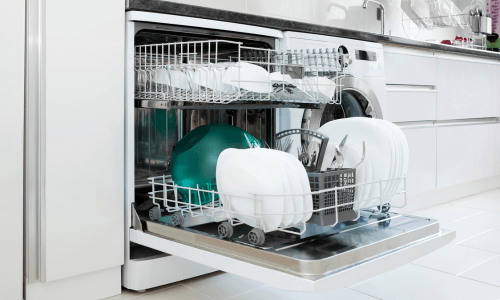
Dishwasher Installation St. Petersburg | Expert Services
Dishwashers are essential appliances in modern kitchens, offering convenience, efficiency, and time-saving benefits for homeowners. Whether you’re renovating your kitchen or upgrading your appliances, proper dishwasher installation is crucial for ensuring optimal performance and functionality. As a trusted provider of plumbing services in Pinellas County, Saint Pete Plumbing is committed to offering comprehensive dishwasher installation services. In this detailed guide, we will explore the intricacies of dishwasher installation, covering pre-installation considerations, installation procedures, safety precautions, and post-installation tips to help homeowners achieve a seamless and efficient kitchen setup.Pre-Installation Considerations:
Before installing a dishwasher, it’s essential to consider several factors to ensure a successful and hassle-free installation process. Here are some pre-installation considerations:Dishwasher Location:
Determine the ideal location for the dishwasher within the kitchen layout, considering factors such as proximity to the sink, accessibility, and available space. Choose a location with easy access to plumbing and electrical connections.Plumbing Requirements:
Ensure that the plumbing system can accommodate the dishwasher’s water supply and drainage needs. Verify the location of existing water supply lines, drain pipes, and electrical outlets to facilitate installation.Electrical Wiring:
Check the electrical requirements for the dishwasher, including voltage, amperage, and outlet compatibility. Ensure that the electrical circuit can safely support the dishwasher’s power consumption and that a dedicated outlet is available.Cabinet Modifications:
If necessary, make any modifications to kitchen cabinets or countertops to accommodate the dishwasher’s dimensions and installation requirements. Measure the space accurately to ensure a proper fit.Permits and Regulations:
Check local building codes and regulations regarding dishwasher installation requirements, permits, and inspections. Ensure compliance with all applicable codes and obtain necessary permits before proceeding with installation.Installation Procedures:
Once the pre-installation considerations have been addressed, follow these step-by-step procedures for dishwasher installation:Prepare the Installation Area:
Clear the installation area of any obstructions, debris, or old appliances. Ensure that the floor is level and stable to provide a solid foundation for the dishwasher.Connect Water Supply:
Shut off the main water supply to the kitchen and disconnect the hot water supply line from the sink faucet. Install a dual outlet valve or tee fitting on the supply line to connect both the sink faucet and dishwasher.Drainage Connection Install:
Install a high-loop or air gap device in the dishwasher drain hose to prevent backflow and contamination of the dishwasher. Connect the drain hose to the sink drain or garbage disposal using a hose clamp or connector.Secure the Dishwasher:
Slide the dishwasher into the designated space and adjust the leveling feet to ensure that it is level and stable. Use shims or spacers as needed to fill any gaps between the dishwasher and surrounding cabinets.Connect Electrical Wiring:
Follow the manufacturer’s instructions to connect the dishwasher’s electrical wiring to a dedicated outlet or junction box. Ensure that the wiring is properly grounded and secured to prevent electrical hazards.Test for Leaks and Functionality:
Turn on the main water supply and run a test cycle on the dishwasher to check for leaks, proper drainage, and functionality. Inspect all connections and components for any signs of leakage or malfunction.Safety Precautions:
During dishwasher installation, it’s essential to prioritize safety to prevent accidents, injuries, and damage to property. Here are some safety precautions to keep in mind:Shut off Utilities:
Before beginning installation, shut off the main water supply and disconnect electrical power to the kitchen to prevent accidents or electrical shocks.Use Personal Protective Equipment:
Wear appropriate personal protective equipment, such as gloves and safety glasses, when handling tools, equipment, or plumbing components.Follow Manufacturer’s Instructions:
Adhere to the manufacturer’s instructions and guidelines for installation, including electrical wiring, plumbing connections, and safety precautions.Avoid Overloading Circuits:
Ensure that the electrical circuit used for the dishwasher installation can safely support the appliance’s power requirements. Avoid overloading circuits or using extension cords.Inspect for Gas Leaks:
If the dishwasher is equipped with a gas-powered heating element, inspect for gas leaks and ensure proper ventilation to prevent carbon monoxide buildup.Post-Installation Tips:
After completing dishwasher installation, follow these post-installation tips to ensure optimal performance and longevity:Run a Clean Cycle:
Before using the dishwasher for the first time, run a clean cycle with a dishwasher cleaner or vinegar to remove any manufacturing residues or debris.Check for Leaks Regularly:
Periodically inspect the dishwasher and surrounding areas for signs of leaks, water damage, or moisture buildup. Promptly address any leaks or issues to prevent further damage.Maintain Filters and Spray Arms:
Regularly clean and inspect the dishwasher’s filters, spray arms, and interior surfaces to remove food debris, grease, and mineral deposits. This will help maintain optimal cleaning performance.Use Quality Detergent:
Use high-quality dishwasher detergent and rinse aid to ensure clean and spot-free dishes. Follow the manufacturer’s recommendations for detergent dosage and loading instructions.Schedule Routine Maintenance:
Schedule routine maintenance checks with a qualified plumber or appliance technician to inspect the dishwasher, plumbing connections, and electrical components for any signs of wear or damage.Dishwasher installation is a critical aspect of kitchen remodeling or appliance upgrades, requiring careful planning, preparation, and execution to ensure optimal performance and safety. By following the pre-installation considerations, installation procedures, safety precautions, and post-installation tips outlined in this guide, homeowners can achieve a seamless and efficient dishwasher installation process. Saint Pete Plumbing is committed to providing expert dishwasher installation services in St Petersburg & Pinellas County, FL, helping individuals streamline their kitchens and enjoy the convenience of modern appliances. With attention to detail and adherence to best practices, homeowners can confidently rely on their newly installed dishwashers for years to come.






Leave a comment